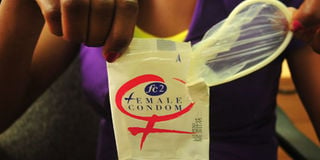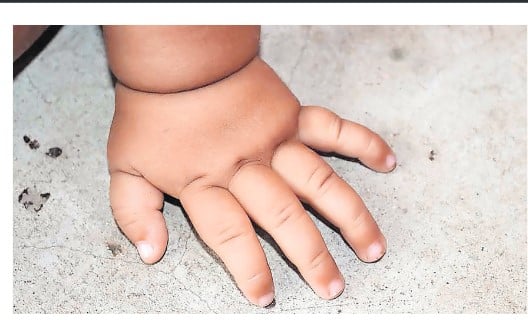Prime
Female condom makes a comeback but will women use it?

The use of contraceptives remains low in Uganda, with women more likely to use oral pills and other forms of contraceptices, instead of the female condoms. Campaigners are now promoting the relaunched condom as the best option for women. Photo by Joseph Kiggundu.
What you need to know:
It has previously been described as noisy and uncomfortable to use. However, campaigners are now moving to promote the new female condom dubbed FC2. They say the improved version of the condom is another tool to empower and protect women from sexually transmitted infections as well as pregnancy.
Every year on September 26, Uganda joins the rest of the world to commemorate the World Contraceptive Day. While the major aim of most of these contraceptives is to prevent unplanned pregnancies, some of them like the condoms also protect people from contracting sexually transmitted infections (STIs), and HIV/Aids.
However, condoms had always been a reserve for men. But 20 years ago, a female condom dubbed Female Condom 1 (FC1) was introduced on the global market and later in Uganda. The coordinator of the condom unit at the Ministry of Health, Ms Vashta Kibirige explained that the female condom was introduced on the Ugandan market because women wanted a procedure within their control and needed more choices for prevention of both pregnancy and sexually transmitted infections.
The communications coordinator of the Uganda Health Marketing Group (UHMG), Ms Ritah Mwagale, which has been at the forefront of promoting the female condom explains that it aims to encourage women to have power, and be able to make decisions regarding their reproductive health and rights.
“They should not sit and wait for their partners to decide for them,”she explains.
However, while the female condom was seen as a good initiative and invention, it had a number of shortcomings that made it unpopular. Mwagale explains: “It was not received well because of the noise it made during sex.”
She states that because of these inadequacies, the World Health Organisation (WHO) decided to work with partners like the Food and Drug Administration (FDA) in the United States to invent a better version of the female condom.
This led to the birth of the Female Condom 2 (FC2) in October 2009.
Advantages of FC2
Mwagale explains that manufactures used the previous technology that was used to make the FC1 and modified it to make the FC2.
“So the issues of noise have been greatly reduced. More so, the material used to make the FC1 was called polyurethane, which was causing the noise but now the FC2 has been improved and they use a material called Nitrile,”she notes.
Mwagale adds that changing the material also helped reduce the price of the condom and it can be used by people who are allergic to latex.
Currently, there is an ongoing campaign to promote this new brand dubbed, “If it is not on, it is not safe”. And as Mwagale explains, the campaign aims at positioning the female condom as the best option for women because they are the most vulnerable to HIV/Aids.
The 2011 Uganda Health Demographic Survey indicates that there are almost 57,000 women living with HIV/Aids in the country, meaning the epidemic has a female face in the country.
On top of that, when it comes to family planning, women have minimal say, yet according to the survey, condom use among men is at only 2.7 per cent.
“So the female condom is being positioned as an option for women and couples to protect themselves from unplanned pregnancies and STIs because the female condom works just as well as the male condom. We are promoting it as a way of ensuring that women are empowered,” Mwagale adds.
“If you look at the HIV statistics and the unplanned pregnancies, this condom gives women power to have control over their reproductive health and also have an option that will work for them.”
The FC2 is being imported into the country by the United Nations Population Fund (UNFPA) on behalf of the Ministry of Health. So far, some 2.4 million condoms have been imported, and the ministry says it is expecting more stock.
UHMG says in 2012, they conducted a study that showed that women are actually using the new condoms.
“We expect another stock of three million condoms before the year ends. So this year alone, we will have imported 5.4 million female condoms.
Lack of awareness
But while there would have been need for more female condoms, another study conducted by UHMG in August 2012 in eight districts of Yumbe, Oyam, Katakwi, Moroto, Mubende, Kotido, Kanungu and Kabong on the duo protection role of the condom, which is preventing unplanned pregnancies and protecting one from STIs, it was noted that there was very little awareness of the female condom.
More so, people had so many misconceptions about it. “Some were saying it is as big as a tyre, others were saying it is going to disappear in the woman’s uterus,” Mwagale explains.
What the public says
In a survey done by this newspaper around Kampala, out of the 26 women asked about how much knowledge they have on the female condom, only 10 were aware of its existence.
Shifrah Namulondo, one of the interviewees who said she did not know of the existence of the female condom stated: “I am sure that even if I was aware of its existence and wanted to use it, my husband would not let me wear it.”
She adds, “But I do not think I would also want to use it. It does not sound like a safe thing to wear.”
The other ten who knew about its existence said they would not like to use it because they find the process of wearing it disgusting. “The fact that I have to push my finger inside me while wearing the female condom makes it less appealing. So I always insist that the man wears the condom,” 36-year-old Gift Muhaise explains.
Meanwhile, Mwagale adds that there is also general negativity about the condoms by some people. “So if they hear that there is a female condom that is even worse.”
Mr Sam Gabula is one such person.
He states: “You mean there is a female condom? I can never let my wife wear it, what if it slips into her uterus? Where will I get the money from to have it removed? That’s one thing I can never allow in my home,” he says while shaking his head.
Meanwhile, 26-year-old Derrick Kabali says he would not feel safe sleeping with a woman wearing a female condom. “I do not think it is as safe as the male condom which is why I would also wear a male condom if I was to sleep with a woman wearing a female condom.
But while people like Gabula have discarded the female condom, Mwagale says there are people that have embraced the condoms.
“People living with HIV and commercial sex workers have embraced these condoms because some men do not pay attention because they are already drunk.”
Gertrude Nakibirige (not real names), a commercial sex worker in Kimombasa can attest to this. Nakibirige says while she has never used the FC1, she finds the FC2 convenient. “With the kind of job I do, protection is very important but some men do not want to use condoms. That is why I always wear a female condom. With this, I am assured of safety.”
Despite the mixed feeling about the female condom, the coordinator of the condom unit at the Ministry of Health says currently, these condoms are not found everywhere since they are still doing the awareness.
But Mwagale explains, “Government procures the condoms and they are taken to health facilities and health organisations that go down to the community and first sensitise them. We are doing a gradual rollout.”
She adds: “They are not on sell; they are free of charge to whoever needs them.”
But if women will use the female condom remains to be seen, although campaigners are optimistic it will achieve intended purpose.




